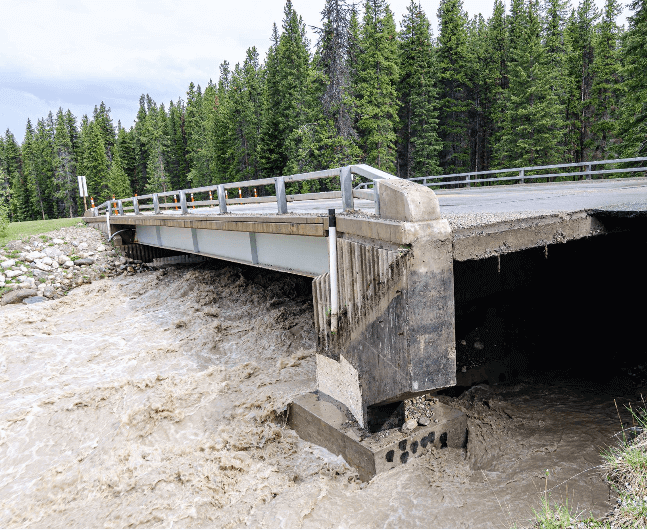Colorado is no stranger to extreme weather events, and the devastating floods of 2013 are a harsh reminder of how vulnerable infrastructure can be in the face of natural disasters. Between September 9th and 16th, 2013, the Front Range experienced record rainfall that led to catastrophic flooding. With some areas receiving up to 18 inches of rain, the resulting flood damaged homes, displaced thousands, and left infrastructure in shambles. The City of Greeley was one of the communities affected, particularly in the Gateway Natural Area, where access to the Seaman Reservoir was cut off after bridges were damaged. The Seaman Bridge Replacement project demonstrates how innovative engineering can provide resilient, sustainable solutions for communities in the face of such challenges.
The Challenge of Natural Disasters on Infrastructure
Bridges are essential as transportation infrastructures, connecting communities and supporting local economies. However, they are highly vulnerable to natural disasters like floods, which can cause significant structural damage. In 2013, the high flows of the Cache la Poudre River severely damaged bridges that provided both public pedestrian and private vehicle access to the Seaman Reservoir. This event brought light to the need for innovative and resilient engineering solutions capable of withstanding the forces of nature while maintaining access to key resources and recreational areas.
Seaman Bridge Replacement Case Study
The Seaman Bridge is located in the City of Greeley, Colorado, within Larimer County’s Gateway Natural Area. This bridge plays a significant role in the city, as it provides public pedestrian access as well as private vehicle access to the Seaman Reservoir. During the 2013 flood, high flows in the Cache la Poudre River severely damaged the bridge access, which made replacement necessary to restore this important route to the reservoir.
Engineering Challenges
The Seaman Bridge Replacement project encountered many engineering challenges, most notably environmental and structural issues. Protecting the river’s wildlife habitat during construction was a major environmental concern, making minimal disruption to the ecosystem throughout the project a priority. On the structural front, engineers faced the challenge of designing a bridge capable of withstanding future flood events. The need to eliminate mid-river piers was essential to reduce any potential obstructions to water flow, providing long-term resilience against future flooding.
Innovative Solutions
Several innovative engineering solutions were implemented to meet these challenges. Subsurface investigations were conducted to determine the best foundation designs for the new bridges, making sure that they would remain stable even during future high-water events. Hydraulic studies were carried out to analyze river flows during major flood events. These studies provided information for the elevation design of the bridges, making certain that large flood flows could pass under the structures without causing damage or obstructing the river’s flow. The new bridges were designed as modular, single-span vehicular bridges with concrete decking, spanning 78 and 91 feet, which eliminated the need for mid-river supports. To preserve the river’s ecosystem, the original piers were left intact to protect the wildlife habitats that had developed around them over the years.
The Outcomes
The Seaman Bridge Replacement project delivered several positive outcomes. The new bridges are now more resilient, designed to withstand extreme weather events and ensure long-term reliability. The project successfully balanced structural integrity with environmental stewardship, preserving wildlife habitats and maintaining the natural flow of the Cache la Poudre River. Additionally, the community greatly benefited from the restoration of safe pedestrian and vehicle access to Seaman Reservoir, providing continued access and infrastructure reliability for years to come.
Building Resilient Infrastructure for the Future
The Seaman Bridge Replacement project highlighted the important role of innovative engineering in tackling complex infrastructure issues. By employing advanced hydraulic studies, sustainable construction practices, and cutting-edge design, the project successfully addressed the challenges presented by natural disasters. It showcases how dynamic engineering is needed for creating resilient and sustainable transportation infrastructure that are capable of withstanding future environmental disasters.
As Colorado continues to experience extreme weather events, projects like the Seaman Bridge Replacement bring attention to the need for innovative engineering solutions. To learn more about innovative transportation projects that prioritize resilience and sustainability, visit Enganalytics Transportation Projects for additional case studies and insights.

